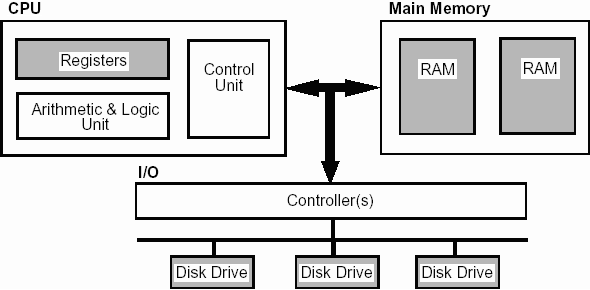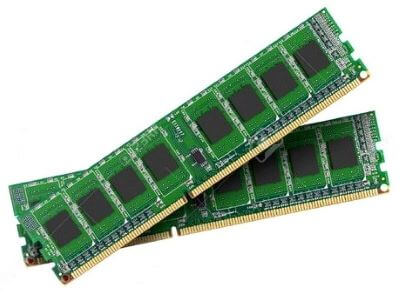HISTORY OF COMPUTERS
The history of computers starts with the development of a device called the Abacus by the Chinese around 3000 BC. The Abacus was used by the Chinese to make systematic arithmetic operations. Although there were a number of improvements in calculating devices, no conceptual changes were made until the end of the 18th century.
During the first decade of 19th century, Charles Babbage developed his differential and analytical engines. This device had provisions for inputting data, storing information, performing arithmetic operations and printing out results. This provided a base for the modern computer. As the characteristics of the computer designed by Charles Babbage was almost all same as the modern day computer in every sense, so Charles Babbage is considered as the Father of Modern computer. At the end of the 19th century, Herman Hollerith and James Powers designed a data processing machine for processing census information. Hollerith developed codes for processing both alphabetical and numerical data. In the early 1940, a significant machine was built utilizing the electromagnetic relay concept. It was called as Mark 1. Later in the 1940s, the first electronic machine was introduced. It was called as ENIAC (Electronic Numerical Intergrator and Calculator). John Von Neuman and his team developed a high speed digital computers using vaccum tubes during the period 1946-52. This machine mainly served as a laboratory model to test many of the notions of programming and coding used in modern computers. Until 1950, the major contributions were from the universities and research institutes but in the early 1950s, computers started appearing in quick succession. And later on many improvements in speed, memory, input and output devices and programming techniques were made.
TYPES OF COMPUTERS
Based on the operating principles, computers can be classified into one of the following types.
- Digital Computers.
- Analog Computers.
- Hybrid Computers.
COMPUTING CONCEPTS
A computer irrespective of its size, type or capacity is basically a device that is used to process data and give result. It performs the following operations in a sequence.
- Receives Data
- Stores Data
- Processes Data
- Outputs the result
Raw facts known as Data is fed into the computer using the input units in such a way that the computer can understand. The computer then processes the data based upon certain instructions provided to it and produces a meaningful and desired output in the human readable form known as information on the output device. The input is actually a keyboard or a mouse and the output is a VDU or a printer.
COMPUTER HARDWARE
The machinery parts, which give the physical dimension of a computer, are collectively called as the hardware. The major hardware components of a computer are given below.
- Input Device
- Central Processing Unit
- Output Unit
- External Storage Device
Input Devices
An input device presents data to the processing unit in machine-readable form. Although the keyboard is a common input device for a small computer, a system may also support one or more of the input devices.
The input unit performs the following functions:
- Accepts data and programs from the external environment (input devices like keyboard etc.)
- Converts these programs and data into computer acceptable form.
- Supplies the converted instructions and data to the computer system for further processing.
Examples of input devices
- Keyboard
- Mouse
- Joy Stick
- Magnetic Ink Character Reader
- Optical Character Reader
- Bar Code Reader
- Light Pen
- Mark Sense Reader
- Scanner
Central Processing Unit (CPU)
The Central Processing Unit receives data and instructions, stores them temporarily and then processes the data as per the instructions. It is the brain of the computer system. It performs all types of calculations and comparisons. And it is also responsible for controlling the entire operation of the computer system. It has the following three parts.
- Memory Unit
- Arithmetic Logic Unit
- Control Unit

Memory Unit
The memory unit stores all data, instructions and results temporarily. The memory consists of hundreds of thousands of cells called "storage locations". The memory unit is called by different names, such as storage, internal storage, primary storage, main memory or simply memory.
The internal memory unit is made of solid state devices that may belong to one of the following two media.
- Magnetic Cores
- Semiconductors
Magnetic Cores
In the early stage, the magnetic cores were the principal elements used for internal memory. A magnetic core is a tiny hollow ferric ring that can be magnetized by means of an electric current sent through it. The polarity of the core is determined by the direction of the current. Thus, a single core can be made to represent a binary 1(one) or 0(zero). An array of such cores make up the internal memory.

Semiconductor Memory
Nowadays, the magnetic core memory has largely been replaced by semiconductor devices. Semiconductor memory consists of a large number of transistors embedded in a silicon chip in high densities. A transistor is a two state device that can be made to conduct or not-to-conduct. Here the conducting state represents the binary 1 and the not conducting represents the binary 0.
Compared to magnetic core memory, transfer of data or information in semiconductor memory is much faster. However, semiconductor memories are volatile. Thus the data stored in a semiconductor memory is lost if the power supply is turned off. On the other hand, core memories and bubble memories are not volatile. And they retain their data even if the power supply is turned off. You can pull a core memory card out of a computer, plug it into another similar computer and the contents of the memory should still be intact.
The type of memory used in a computer is not important. It is only necessary that the memory consists of a number of bitable, individually addressable elements each represents a single binary digit (1 or 0). Even memory device must have these two absolutely necessary properties.
- Every location that stores a binary digit must be uniquely addressable.
- It must be possible to read the state of every stored binary digit.
ROM
The Abbreviation ROM stands for Read Only Memory. The ROM holds its contents permanently. Personal computers use ROM to store programs that are essential to the operation of the computer. The programs stored in the ROM are often called as Firm Ware. The ROM is used to store programs 'Boot strap loader' and BIOS.
Boot strap loader is a start up program that starts the disk drive and loads the computer's operating system.
RAM
Semiconductor memories are referred to as Random Access Memory(RAM) because the data stored in it can be accessed randomly. The size of a RAM is described in terms of bytes(kilo bytes or giga bytes). A byte consists of 8 bits. A bit represents either 0 or 1.

| 1 Bit | Either 1 or 0 |
| 1 Byte | 8 Bits |
| 1 Kb | 1024 Bytes |
| 1 Mb | 1024 Kb |
| 1 Gb | 1024 Mb |
| 1 TB | 1024 Gb |
Note: RAM and ROM, both are randomly accessible. Whereas the data in a ROM is not changeable, only accessible and it is permanent.
Please do leave a comment on this blog. Have a nice day.
Comments
Post a Comment